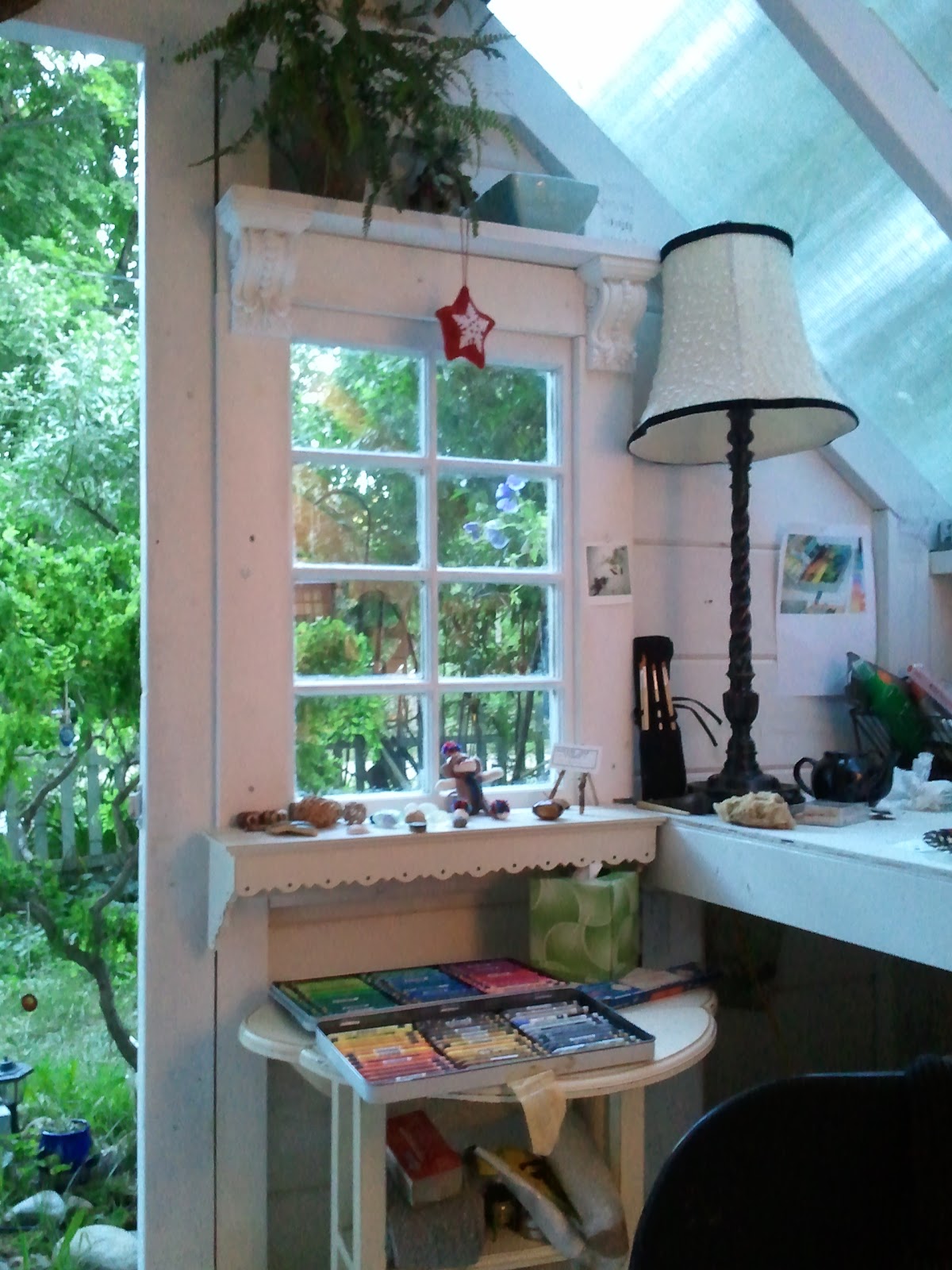The funny thing about chasing rainbows is that you can never get close enough to actually touch one, without getting wet, and just when you think you have located the rainbow's end, you are too close to see it. Rainbows are a longdistance-only experience.
Many people embark on the creative life with the hope of making a living from it. They hone their skills and study the market in order to produce a product that will sell.
Observing the numbers of art school graduates versus those who actually make a viable living with their art, it becomes quickly apparent that those who succeed as professional artists are in the minority.
Some people study to become artists because the creative life seems attractive, it seems exotic and sexy and cool. They attend gallery openings, they aim to become famous. They intend to become rich.
This is a trap.
At some point in this sort of creative life of producing art there comes a time when the seduced artist becomes a manufacturer.
The gallery or the art director says something like "the clients really liked the blue one, can you do more of those?", or "they really liked the blue one but it's too big for their space, can you make a smaller version?", or "they love the blue one, but can you do it in orange to match their sofa?"
The focus of the creative impulse shifts from producing art for your own vision, to producing product to fulfill someone else's vision or needs.
Don't get me wrong, I admit that making a living by making my art is deeply satisfying, but it is very hard to avoid those traps.
Art without compromise means taking risks, exploring new and uncharted waters, letting myself be caught up in ever changing and evolving art forms, without fear.
When I was working for eight years producing my book "Artist Afloat - A Sketch Journal of Britain by Canal" it soon became apparent that in order to make the pages flow with a similarity, a cohesiveness.
I needed to determine and adhere to a specific palette and style. There had to be unity throughout the hundreds of illustrations for the book.
That proved hard to do, especially as time passed. Each new painting held new revelations for me, and I found it quite difficult to limit my growth to what I had already discovered in the making of the book.
Eventually I made a way to explore my work as an artist and to also keep the book's very many illustrations stylistically consistent.
Before embarking on a new illustration for the book, I made a separate painting just for myself, in a quite different style which reflected my current growth as an artist.
After this, I went through my ever growing pile of book illustrations, studying them carefully, immersing myself in them. Then I created the next illustration in that style.
By allowing my natural growth as an artist to take form, I satisfied my need for self expression, and then I was free to go back to the familiar styles and techniques of my book. The resulting illustrations had a fresh and vibrant spirit to them without compromising the stylistic integrity of the book as a whole.
In taking the very real risk of being self employed, I was free to grow as an artist, ever trusting that my own creative vision would prove popular with enough souls in the world that I could support myself.
It wasn't always easy. It took about twenty years of struggling and hoping, taking poorly paying jobs on spec, before I finally found that my audience had grown, and commissions for work came with regularity and sufficient remuneration that life was no longer a struggle.
Never stop chasing your rainbows. Persevere through the hard times, believe in the power of your own vision. Compromise when you must, but to find true happiness as an artist never relegate your work to the mere production of popular sentiment. Follow your own vision.
Art is not about product, it is about process. That is what sells, the sudden lightening and cracking thunder of inspiration.
That is the secret which compels customers to buy your work. They perceive in your work something that is ethereal, intangible and immortal. They want to connect to that. They want to own it.
They too, after all, like all lovers of things that are mysterious, beautiful and true, are also chasing rainbows.


















